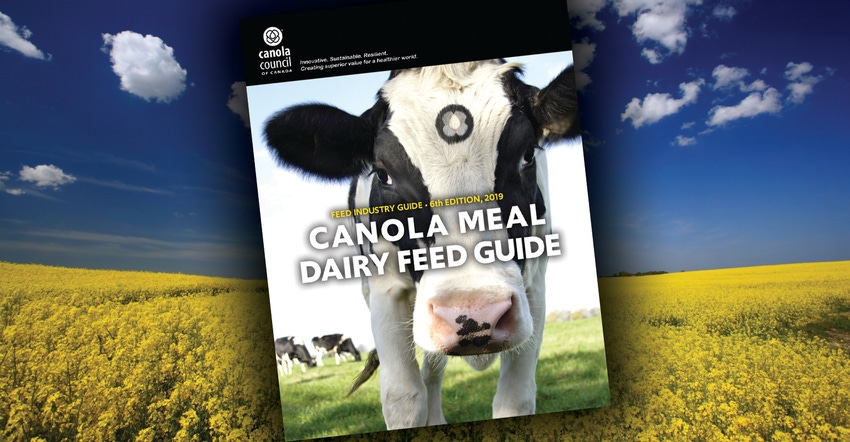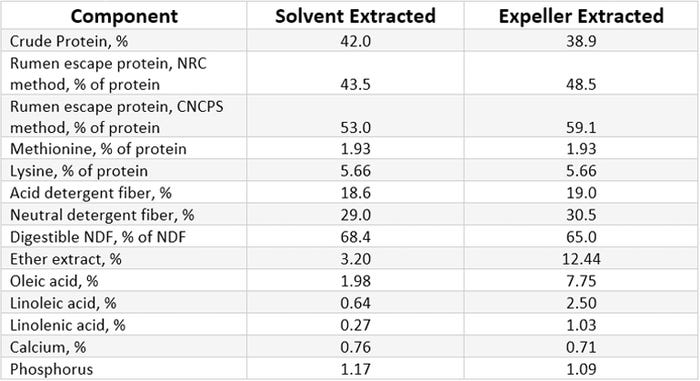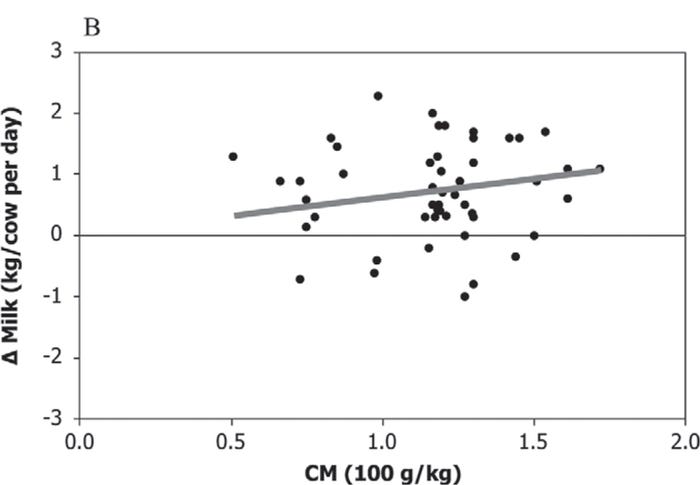Commitment to accuracy: the 2019 canola meal dairy feed guide
Canola meal is a preferred source of protein and amino acids in dairy diets. But what do we know about its nutrient profile? A seven year study brings clarity.
February 1, 2020

Sponsored Content
Canola meal is the second most widely traded protein ingredient in the world, and a preferred source of protein and amino acids in dairy diets. But what do we know about the nutrient profile?
For a seven year period, meal samples were collected from processing facilities and complete analyses were conducted by Bogdan Slominski (University of Manitoba), Glen Broderick (USDA Forage Research Center) and Mike Van Amburgh (Cornell). The results: accurate nutrient values (Table 1).
Table 1. Composition of solvent extracted and expeller canola meal (dry matter basis)
Additionally, in the past 10 years, 30 university feeding trials have been conducted comparing canola meal and soybean meal, as well as other vegetable meals, all with favorable results. There have also been four meta-analyses conducted on the feeding value of canola meal for lactating cows. These studies support the fact that older values grossly underestimate the undegraded protein contribution of canola meal and that canola meal has a unique amino acid profile that efficiently supports milk protein production.
Huhtanen et al. (2011) evaluated results from 122 studies where supplemental protein was supplied by either soybean meal or canola meal. This study showed:
For each kg increase in crude protein, milk increased by 3.4 kg with canola and 2.1 kg with soybean meal.
Canola meal improved intake and this was independent of differences in energy or diet digestibility.
The amount and digestibility of the rumen undegraded protein fraction was greater for canola meal than standard feeding guidelines suggests.
Martineau et al. (2013) compared the effects of replacing vegetable proteins with the same amount of protein from canola meal. The difference in milk yield between canola meal and other vegetable proteins became more pronounced as dietary inclusion levels increased (Figure 1).
Figure 1. Positive within experiment relationship between change in milk yield (kg/cow/day) and dietary portion of canola meal (CM).
Next, Martineau et al. (2014) compared the response in plasma amino acids to dietary protein sources. Essential amino acids were higher and milk urea nitrogen lower when cows received canola meal compared to other vegetable proteins. The amino acid composition of canola meal efficiently meets the needs of lactating cows.
To incorporate the most recent research findings, Martineau et al. (2019) conducted a final meta-analysis to compare feeding results from studies limited to those in which canola meal was compared to another protein both in full and in part. Mixing canola meal with other vegetable proteins can enhance the value of the non-canola protein. The study also showed that canola meal can be provided in diets up to 19% of the dry matter with no losses in milk production and no negative effect upon intake.
Download the 2019 Canola Meal Dairy Feed Guide, available at Canolamazing.com. This ongoing research is part of the Canola Agri-Science Cluster, with funding provided through Agriculture and Agri-Food Canada’s Canadian Agricultural Partnership, the Canola Council of Canada, Alberta Canola, SaskCanola and the Manitoba Canola Growers.
Summary: Accurate formulation with canola meal benefits milk production.
References available upon request.
About the Author(s)
You May Also Like



